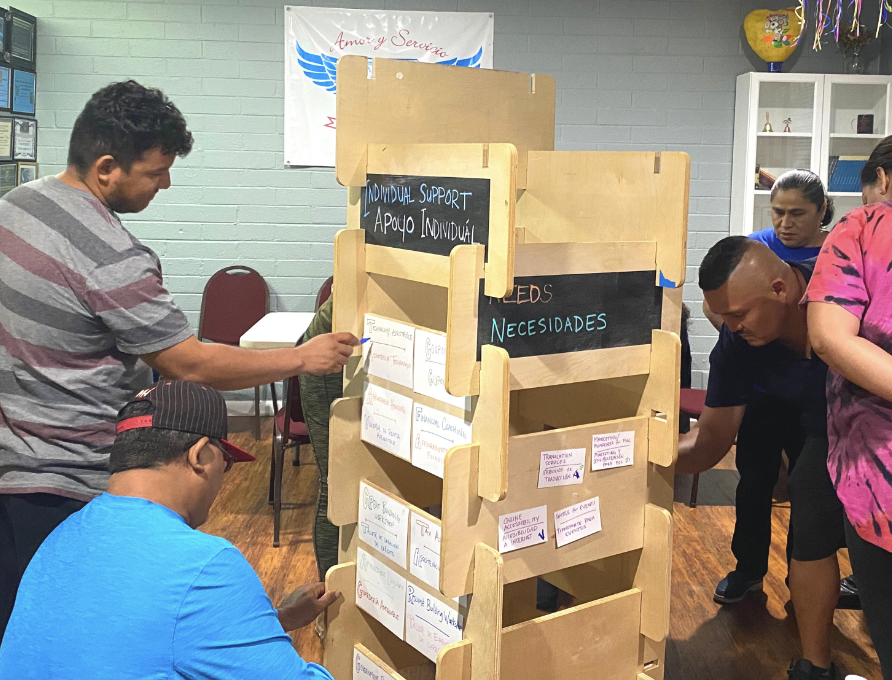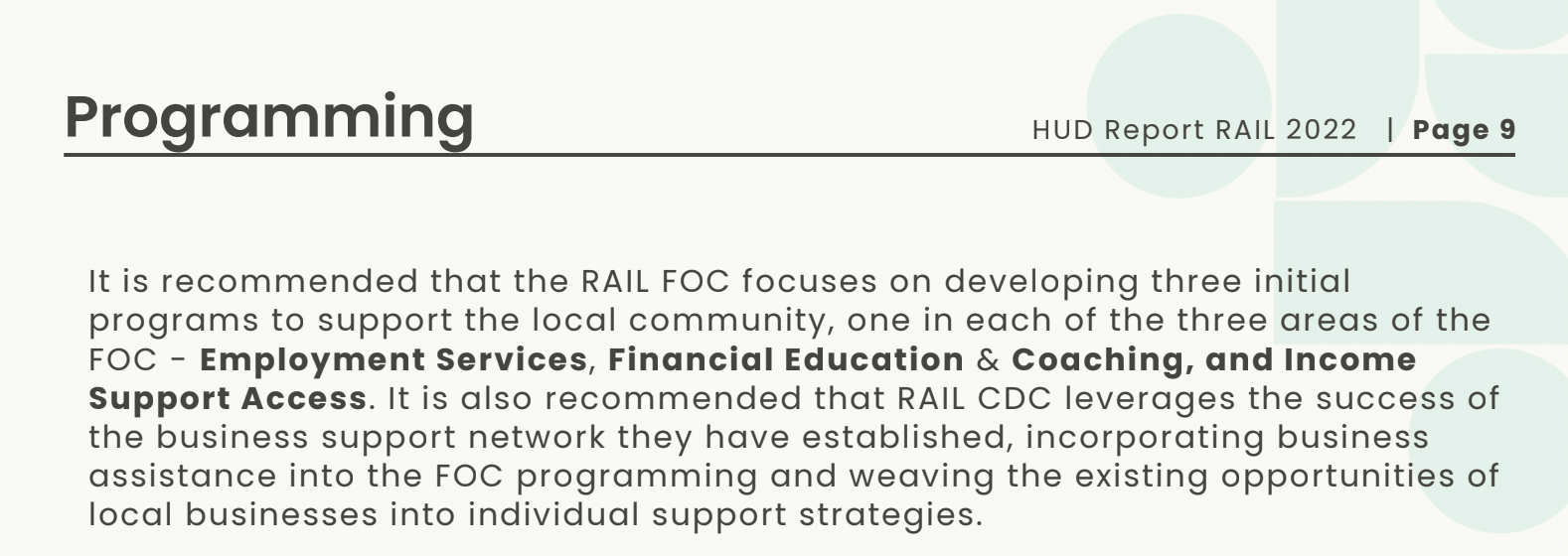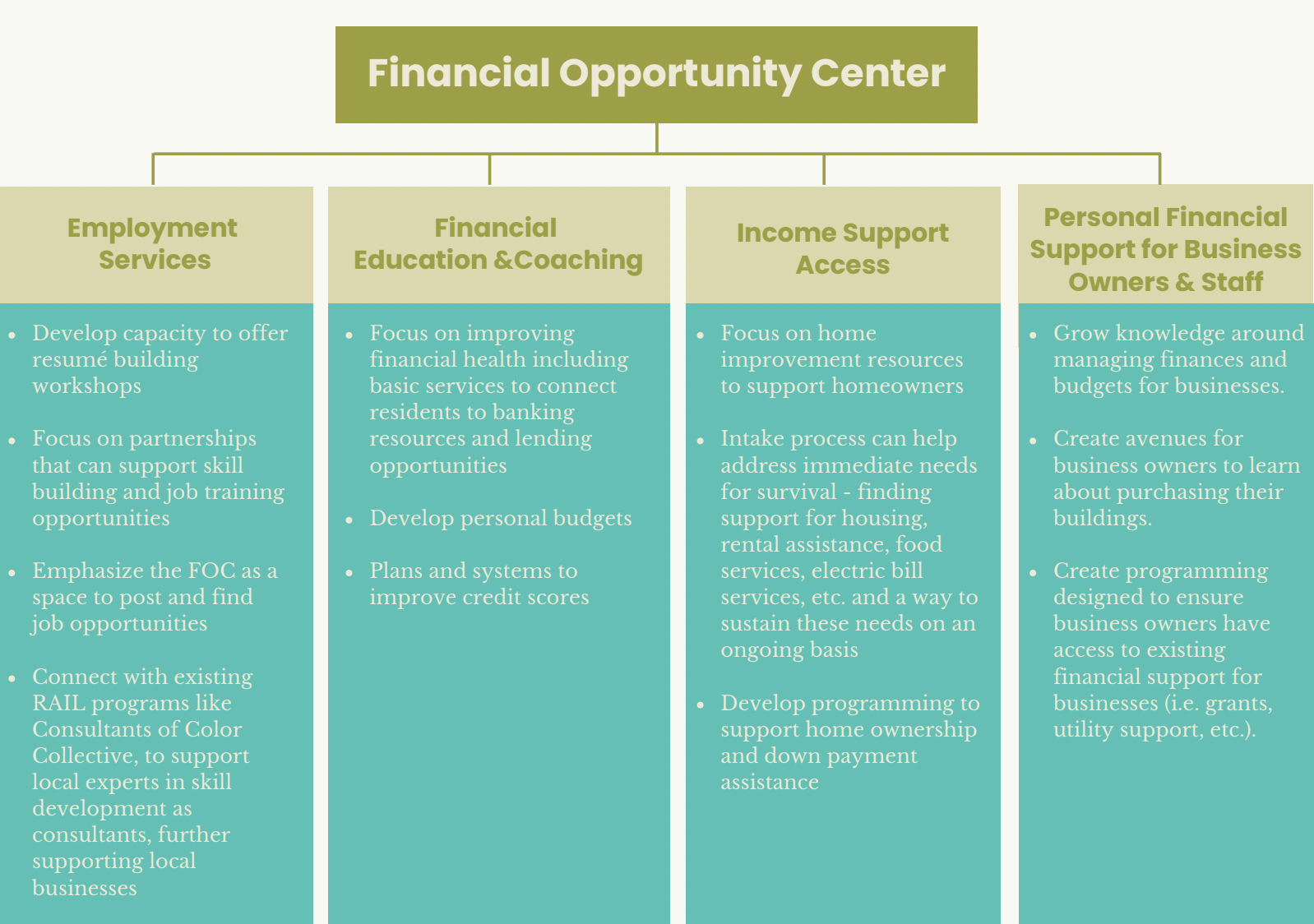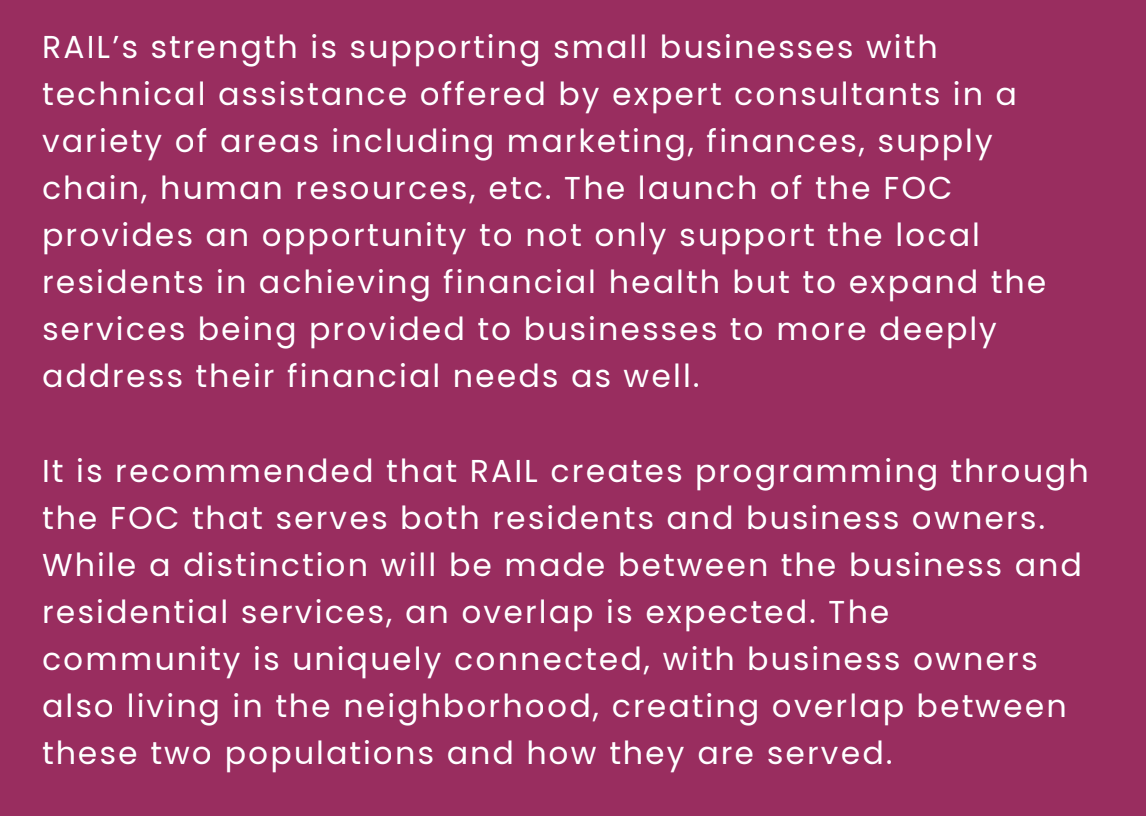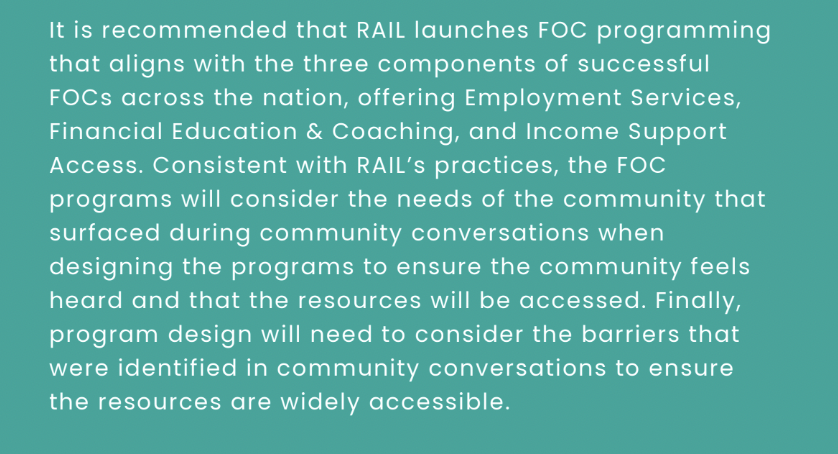Scarlet was painting her van in the style of VanGogh’s Starry Night in front of her abuela’s house when one of RAIL’s consultants stopped to talk to her. Augie Gastelum was canvassing the neighborhood to engage neighbors in an upcoming meeting and Scarlet caught his eye because he knew the power of artists in helping to bring people together. Scarlet’s family has been in the Southside neighborhood for three generations, a neighborhood that continues to be primarily made up of Spanish-speaking residents with a deep history in Mesa.
Eventually, Scarlet would get very engaged in the work of RAIL as a co-creator on creative engagement projects, a partner on community murals, a participant of the Creative Academy, and the first recipient of services from RAIL’s Financial Opportunity Center. A fence was built by volunteers in her abuela’s front yard, and her mom helped to translate content for community meetings. Scarlet now has supplemental income opportunities and RAIL has a reliable and passionate team member.
These are the stories that define RAIL’s work. All of the programs and opportunities that are developed to support the community through RAIL are just one part of the impact. It is the promotion of connection and relationships within the community that contributes to cohesion and, ultimately, neighborhood resilience.
This report outlines the work that was done to engage the Southside neighborhood community and surrounding businesses in a discussion about a new Financial Opportunity Center (FOC) that will be run through RAIL CDC. The community participated in three “platicas,” or community conversations, in both English and Spanish, that offered creative engagement opportunities for participants to share their priorities and immediate needs and how those might be supported through RAIL’s existing programs and the work of the FOC.
Community participation in creative engagement opportunities surfaced a total of 30 novel ideas of interest that could inspire the development and evolution of RAIL programming.
They also shared feedback regarding access, identifying key elements of program design that would ensure residents and business owners could participate in new programs.
One of the biggest accomplishments of this work was the increase in knowledge and the development of a shared language within the community about FOCs and related resources. Additionally, these events created an opportunity to continue building trust and relationships with the community, which will ultimately contribute to the success of activating new programming and ongoing development of cohesion and connection within the community.



